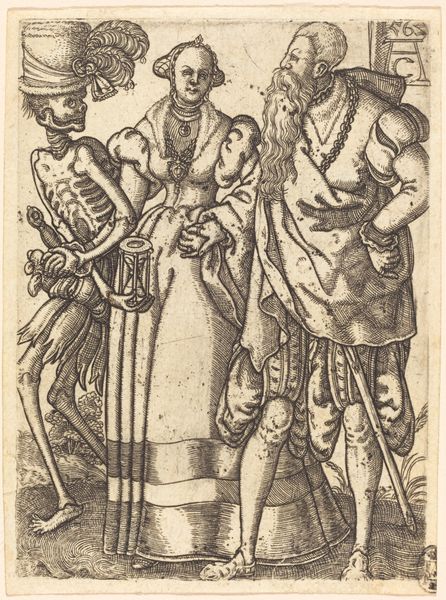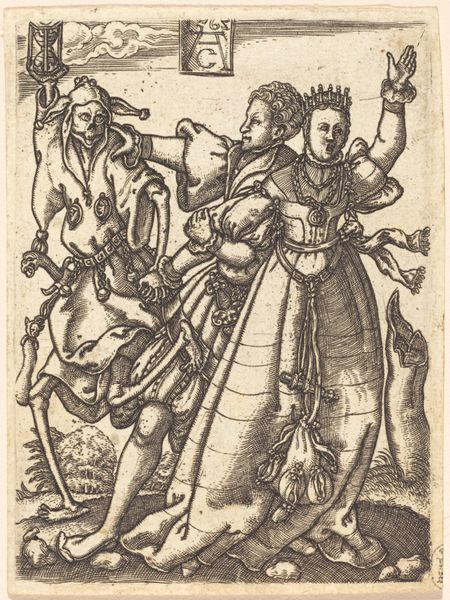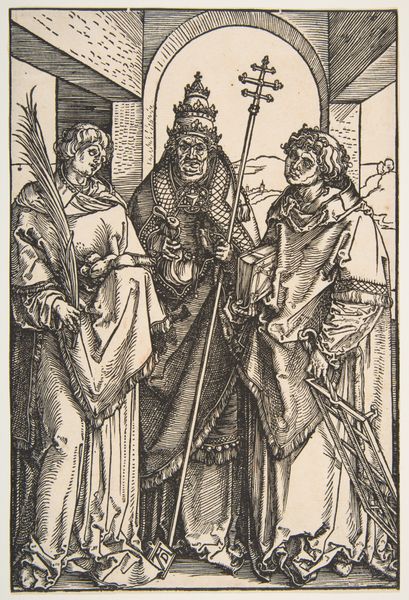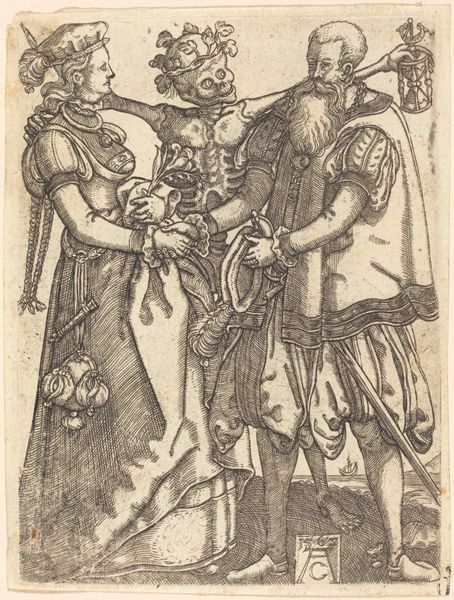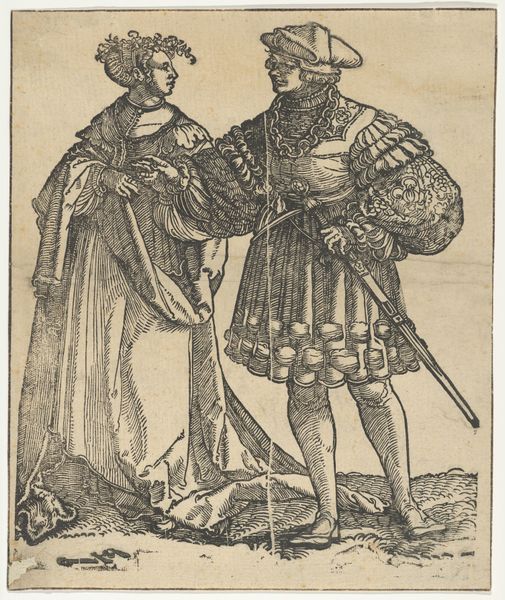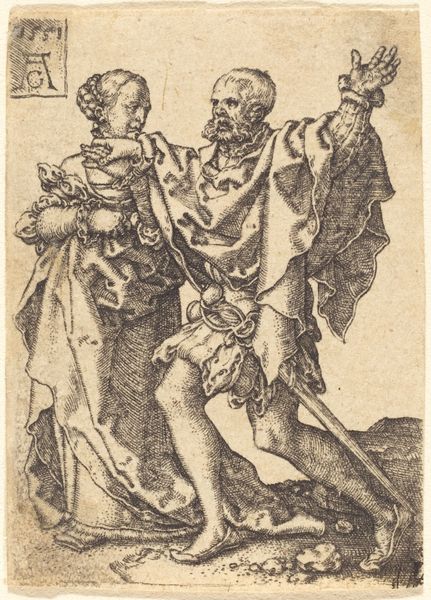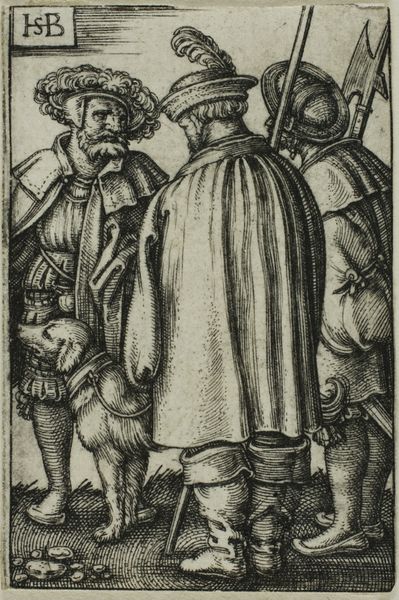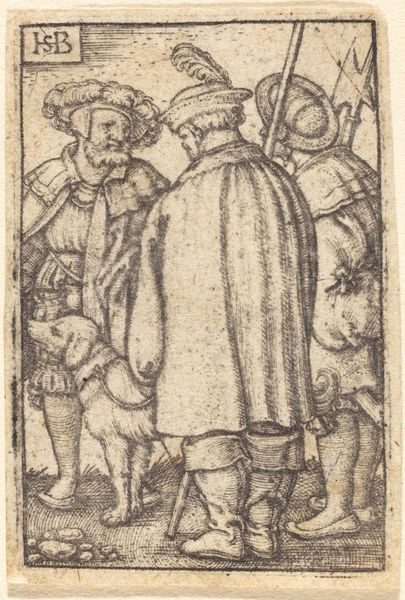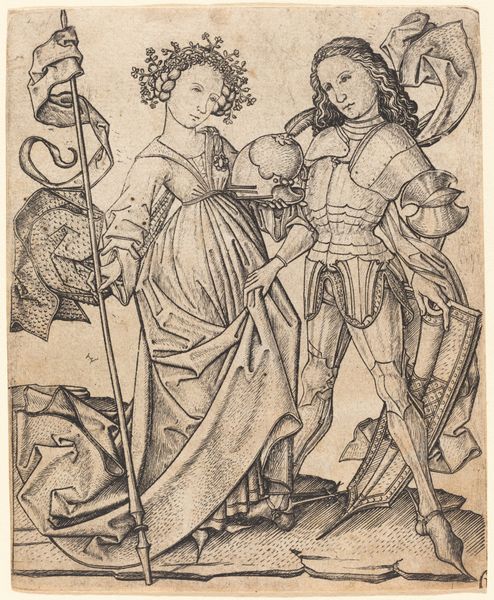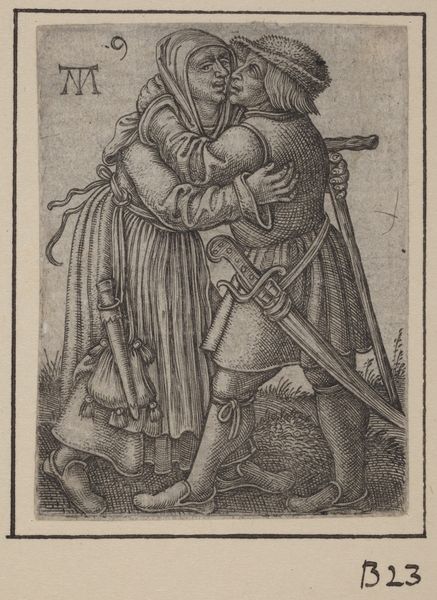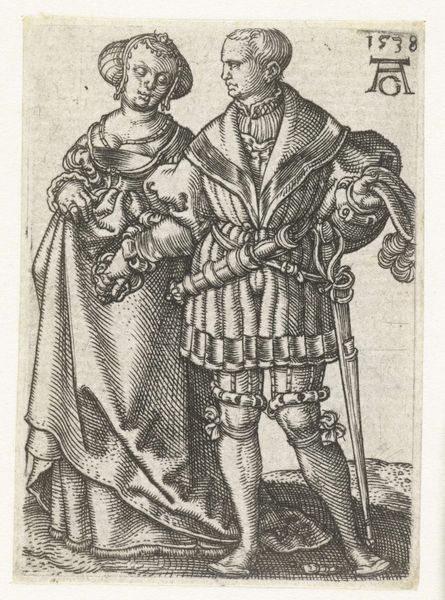
print, engraving
#
medieval
#
narrative-art
#
pen drawing
# print
#
figuration
#
momento-mori
#
line
#
northern-renaissance
#
engraving
Copyright: National Gallery of Art: CC0 1.0
Editor: Here we have Allaert Claesz.'s "Dance of Death III," created around 1562 as a print. It strikes me as incredibly detailed for its size, and the figures are so richly adorned, even Death himself! What can you tell me about this piece? Curator: As a materialist, I am fascinated by the labor and resources required for its production. Consider the engraver meticulously carving the image onto a metal plate, a skill acquired through rigorous training and supported by a complex economic system. The print itself, a multiple, makes art accessible beyond the elite, democratizing, to some extent, the powerful message of the *memento mori.* What do you observe about the subjects' clothing and adornments? Editor: Well, they’re lavish! The man’s feathered hat, the woman’s jewelry, the fine fabrics… they scream wealth and status. Even Death has a cloak. Curator: Exactly. But what does that material excess tell us about 16th-century Dutch society? Wealth, yes, but also a burgeoning mercantile culture and anxieties surrounding earthly possessions. Notice how Death undermines these symbols of status. He's a great leveler, highlighting the ultimate futility of material wealth. How do you see the print functioning as a commodity itself within this context? Editor: I guess it's a paradox. It’s about the transience of earthly things, yet it’s a tangible object someone purchased and kept. So, in a way, it’s also a form of... collecting death? A warning they wanted to keep close? Curator: Precisely! It exposes a culture grappling with both spiritual and material concerns. The print, as a product of skilled labor and trade, embodies this tension perfectly. Editor: I never considered it from that angle! Seeing the labor and the economics behind it really adds another layer of meaning. Curator: Indeed. By focusing on the materials and their circulation, we can unpack a richer understanding of the work’s historical context and its engagement with prevailing societal values.
Comments
No comments
Be the first to comment and join the conversation on the ultimate creative platform.

